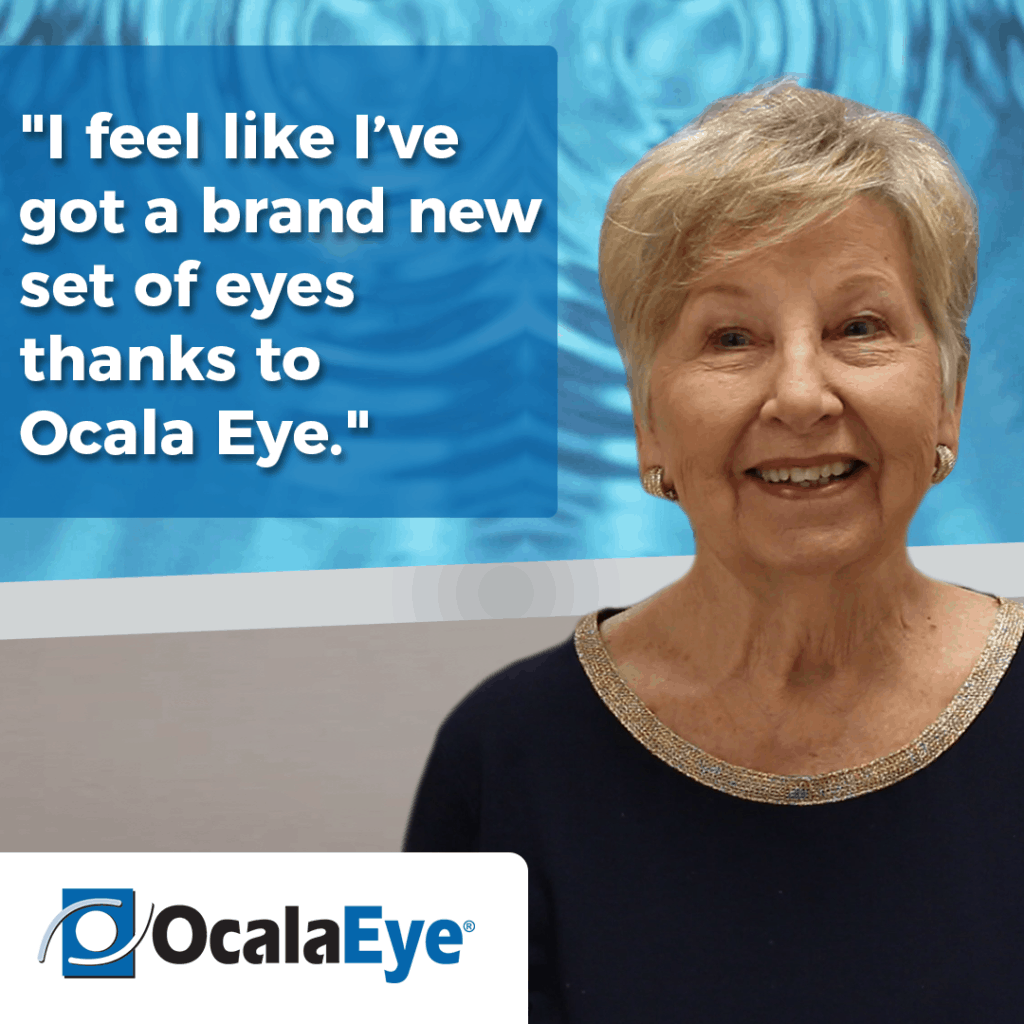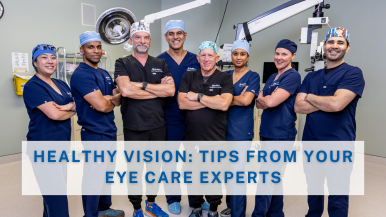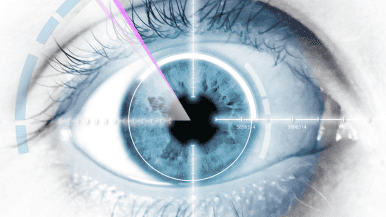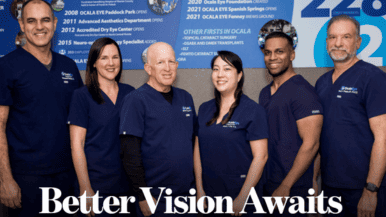 Thanks to advanced cataract surgery in both eyes, Carolyn, a patient of Ocala Eye, can now see and read wonderfully again.
Thanks to advanced cataract surgery in both eyes, Carolyn, a patient of Ocala Eye, can now see and read wonderfully again.
Carolyn’s quality of vision had been slowly deteriorating not only due to cataracts but because of a pterygium, a benign, triangular-shaped growth of the conjunctiva that grows onto the cornea. The result was cloudy, blurry vision that she couldn’t get rid of.
“I came to Ocala Eye because I thought I should be able to see better than I was seeing,” says Carolyn. “And now I feel like I’ve got a brand-new set of eyes thanks to Ocala Eye.”
What is a Cataract?
A cataract is the natural, age-related, clouding of the natural lens of the eye. A mature cataract causes many symptoms, such as decreased vision, glares, halos, reduced contrast and color vision. These symptoms may occur slowly or rapidly depending on the progression of the cataract.
More than 24.4 million Americans have cataracts, and the condition primarily affects older individuals. By age 80, more than 50% of all people in the US either have a cataract or have had cataract surgery.
“The staff at Ocala Eye determined that it was time to have advanced cataract surgery. And they also discovered that I had a pterygium over my right eye. And before you can have advanced cataract surgery, the pterygium must be removed. I never heard that word before, but my doctor knew exactly what it was and what needed to be done.”
Carolyn underwent successful surgery to remove the pterygium. She had to be patient, however, as she developed scar tissue after the procedure which took time to heal. Once her right eye was 100% healed, she was ready to have advanced cataract surgery to reclaim her vision.
How Does Advanced Cataract Surgery Work?
Advanced cataract surgery is one of the most successful surgical procedures in modern medicine. At the time of advanced cataract surgery, your natural, cloudy lens (cataract) is removed and a new lens is implanted into your eye. The lens remains in your eye for the rest of your life and can help you see much better, often without glasses.
“After laser vision cataract surgery on my right eye healed, I could see beautifully out of that eye,” says Carolyn. “Then, I had the other eye done. Now I’m waiting to get a prescription so that I can get a new set of glasses to be able to see distance and to read beautifully.”
Carolyn greatly appreciated the personalized attention she received from the entire Ocala Eye team as well as easy and convenient appointment scheduling and short wait times.
“When I come to Ocala Eye, I feel like they know me,” says Carolyn. “When I walk in, it’s always, ‘Hey, Ms. Carolyn, how are you?’ I’m very comfortable when I come; and even though the waiting room may be full, it’s never a long wait. They’ve got a great system, and we just buzz right through the things that need to be done before the doctor comes in. I still work full-time, and they try to make an appointment that works with my busy schedule.”




